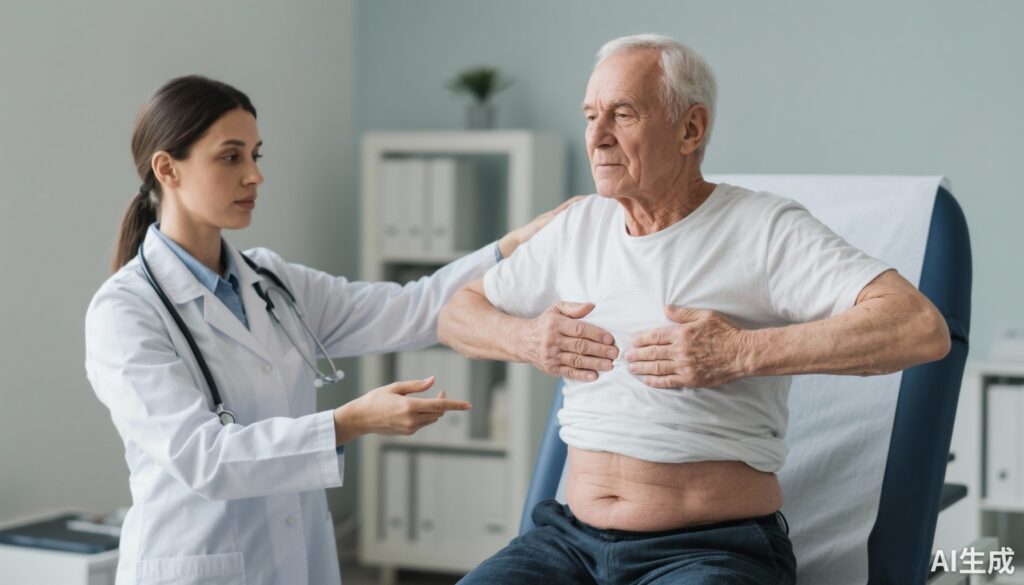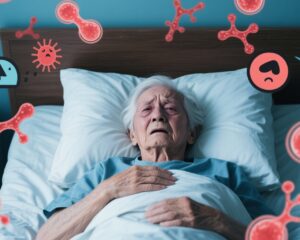Highlight
1. Behavioral therapy using pelvic floor muscle training is as effective as solifenacin drug therapy in improving overactive bladder (OAB) symptoms in Parkinson disease (PD) over 12 weeks.
2. Behavioral therapy avoids common drug-related adverse events such as dry mouth and falls, which were more frequent with solifenacin.
3. The randomized noninferiority trial enrolled 77 veterans with PD, showing significant symptom improvement in both groups and supporting integration of behavioral interventions as initial therapy.
Study Background and Disease Burden
Parkinson disease (PD) is a progressive neurodegenerative disorder characterized primarily by motor dysfunction but frequently accompanied by nonmotor symptoms, including lower urinary tract dysfunction such as overactive bladder (OAB). OAB symptoms—urgency, frequency, nocturia, and urge urinary incontinence—are prevalent in PD patients and detrimentally affect quality of life, independence, and may increase caregiver burden.
Pharmacologic management targeting detrusor overactivity typically employs antimuscarinic agents such as solifenacin. However, these drugs can exacerbate PD-related morbidity due to anticholinergic adverse effects like dry mouth, constipation, cognitive impairment, and increased risk of falls—a major concern given the pre-existing motor and cognitive vulnerabilities in PD.
Consequently, behavioral therapies centered on pelvic floor muscle training (PFMT) and urge suppression strategies have emerged as potentially safer alternatives. These nonpharmacologic approaches offer symptom control without systemic side effects but require rigorous evaluation through high-quality clinical trials to ascertain their relative effectiveness compared with medications.
Study Design
This multicenter, 12-week randomized noninferiority trial was conducted from 2018 to 2023 within four Veterans Affairs health care systems in the United States. The study included 77 participants with a confirmed diagnosis of PD by movement disorder neurologists, exhibiting moderate to severe OAB symptoms (International Consultation on Incontinence Questionnaire OAB module [ICIQ-OAB] score ≥7) and cognitive capacity sufficient to engage in therapy (Montreal Cognitive Assessment [MOCA] score ≥18).
Participants were randomized 1:1 to receive either behavioral therapy or solifenacin. Randomization was stratified by sex, recruitment site, baseline OAB severity, and PD motor symptom severity to ensure balanced groups.
The behavioral intervention, administered by nurse practitioners, comprised pelvic floor muscle training and behavioral urge suppression strategies tailored to each patient. The drug therapy arm initiated solifenacin at 5 mg daily with a possible up-titration to 10 mg daily based on symptom response and tolerability.
The primary outcome measure was the change in ICIQ-OAB symptom scores at 12 weeks, with a pre-specified 15% noninferiority margin. Adverse events were monitored biweekly for the first eight weeks and again at 12 weeks.
Key Findings
Seventy-seven individuals with Parkinson disease participated (mean age 71.3 years, 84% male, mean PD duration 6.6 years). The groups were comparable at baseline regarding cognitive function (MOCA: behavioral 24.8 vs. drug 23.9), OAB symptom severity (ICIQ-OAB: behavioral 8.5 vs. drug 9.1), and other demographic parameters.
At 12 weeks, both groups showed clinically significant improvements in OAB symptoms. The mean ICIQ-OAB scores were 5.5 (SD 2.0) in the behavioral group and 5.8 (SD 2.4) in the drug therapy group, with statistical analyses confirming that behavioral therapy was noninferior to solifenacin (P = .02) within the predefined 15% margin.
Notably, adverse events differed markedly between groups. The solifenacin group reported higher frequencies of dry mouth and falls—side effects that can significantly impact morbidity and safety in PD patients. Behavioral therapy participants experienced fewer adverse events, supporting the safety profile of this intervention.
The trial completion rate was high, with 73 of 77 participants completing the study; dropouts (n=4) occurred only in the solifenacin group due to adverse events or withdrawal.
Expert Commentary
This landmark trial addresses a critical clinical dilemma in the management of urinary dysfunction in Parkinson disease—balancing efficacy with safety. The noninferiority of behavioral therapy established here is clinically relevant given the vulnerability of the PD population to the adverse sequelae of antimuscarinic drugs.
Leading movement disorder and urology specialists endorse integrating behavioral interventions as first-line therapy for OAB in PD. Not only do these approaches mitigate adverse events, but they also empower patients with self-management strategies that may have sustained benefits.
However, implementation barriers such as access to trained practitioners and patient adherence require attention. Future research should focus on optimizing delivery models and assessing long-term outcomes beyond 12 weeks.
Limitations include a predominantly male veteran cohort, which may affect generalizability to broader PD populations, and the relatively short follow-up duration.
Conclusion
This randomized noninferiority trial provides robust evidence that behavioral therapy involving pelvic floor muscle training and urge suppression is as effective as solifenacin drug treatment for reducing OAB symptoms in Parkinson disease, with a superior safety profile.
These findings advocate for revising clinical guidelines to incorporate behavioral therapy as an initial treatment option for urinary symptoms in PD, thereby minimizing drug-related morbidity while effectively alleviating distressing bladder symptoms.
Clinicians should consider patient preferences, cognitive status, and risk factors when devising individualized treatment plans. This study exemplifies the move toward personalized, multidisciplinary care that minimizes polypharmacy and adverse events in complex neurodegenerative disorders.
References
- Vaughan CP, Morley JF, Lehosit J, McGwin G, Muirhead L, Khakharia A, Johnson TM 2nd, Evatt ML, Sergent T, Burgio KL, Markland AD. Behavioral Compared With Drug Therapy for Overactive Bladder Symptoms in Parkinson Disease: A Randomized Noninferiority Trial. JAMA Neurol. 2025 Sep 1;82(9):925-931. doi: 10.1001/jamaneurol.2025.1904. PMID: 40658410; PMCID: PMC12261112.
- Winge K, Fowler CJ. Urinary dysfunction in Parkinson’s disease. Mov Disord. 2006;21(6):757-767.
- Zesiewicz TA, Feltenstein MW, Hauser RA. Treatment of urinary symptoms in Parkinson’s disease. Expert Opin Pharmacother. 2006;7(15):2109-2118.



